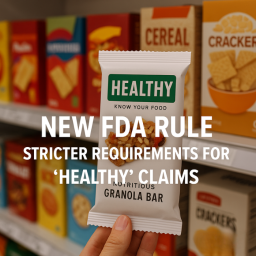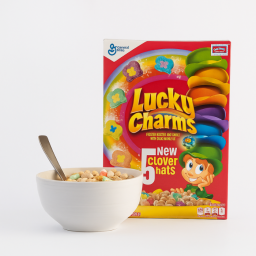
In a significant move to address food waste and enhance consumer understanding, California has enacted Assembly Bill 660 (AB 660), becoming the first state to ban consumer-facing “Sell By” dates on packaged foods. This legislation, signed into law by Governor Gavin Newsom on September 28, 2024, aims to standardize food date labeling practices, thereby reducing confusion that often leads to unnecessary food disposal. The new law, called AB 600, is effective July 1, 2026.
Understanding Food Date Labels
To fully grasp the implications of AB 660, it’s essential to differentiate between the various date labels commonly found on food products:
- “Sell By” Date: Intended primarily for retailers, this date indicates when a product should be sold to ensure optimal quality. However, it does not necessarily mean the product is unsafe for consumption after this date.
- “Best If Used By” Date: This label suggests when a product will be at its peak quality or flavor. Consuming the product after this date is generally safe, though there might be a slight decline in taste or texture.
- “Use By” Date: This date is the manufacturer’s recommendation for the last day the product is at optimal quality. While not always a safety date, it’s the closest indicator of perishability, especially for items prone to bacterial growth.
The Issue with “Sell By” Dates
Many consumers misinterpret “Sell By” dates as indicators of food safety, leading them to discard products that are still safe and wholesome. This misunderstanding contributes significantly to food waste. In the United States, confusion over date labeling accounts for approximately 20% of consumer food waste.
Key Provisions of AB 660
Effective July 1, 2026, AB 660 mandates the following for food manufacturers, processors, and retailers in California:
- Standardized Date Labels:
- “Best If Used By”: Indicates the date after which the product may not be at its best quality but is still safe to consume.
- “Use By”: Signifies the date after which the product’s safety may be compromised.
- Prohibition of Consumer-Facing “Sell By” Dates:
- The use of “Sell By” dates on consumer-facing packaging is prohibited to prevent misinterpretation.
- Retailers can still use coded “Sell By” dates for stock rotation, provided they are not easily readable by consumers and do not use the phrase “Sell By.”
Anticipated Benefits of the Legislation
By eliminating “Sell By” dates and standardizing labeling, California aims to:
- Reduce Food Waste: Clearer labels can prevent the premature disposal of safe food, potentially saving 70,000 tons of food waste annually in the state.
- Provide Economic Savings: Reducing food waste can lead to significant cost savings for consumers and retailers alike.
- Environmental Impact: Less food waste means reduced methane emissions from landfills, contributing to environmental conservation efforts.
Implications for Food Manufacturers and Retailers
Companies operating in California must comply with these new labeling requirements by the 2026 deadline. This transition may involve:
- Revising Packaging: Updating labels to reflect the standardized “Best If Used By” and “Use By” dates.
- Educating Staff: Training employees to understand and communicate the new labeling system to customers effectively.
- Inventory Management: Adjusting stock rotation practices to align with the new labeling standards.
Addressing Common Questions
- How does this affect consumers outside California?
The new California food labeling law applies to manufacturers, processors, and retailers that sell food in the state, regardless of whether the product is produced in California or imported from out of state. If a food product is sold in California, it must comply with the new standardized date labeling requirements. While AB 660 applies specifically to California, it sets a precedent that other states may follow. Consumers elsewhere should be aware of the meanings behind different date labels to make informed decisions and reduce food waste.
- Are these date labels federally regulated?
The new law does not require all food products to have a date label; rather, it standardizes the format for those that do. Certain exemptions may apply to products that are not traditionally labeled with a date, such as some non-perishable packaged goods. Currently, there is no federal mandate standardizing date labels across all food products, leading to variations and consumer confusion. California’s legislation may prompt federal agencies to consider nationwide standards.
Key takeaway
California’s ban on “Sell By” dates represents a significant step toward reducing food waste and clarifying food labeling for consumers. By standardizing date labels, the state aims to provide clearer information on food quality and safety, helping consumers make better decisions and potentially influencing broader changes in food labeling practices nationwide.
FREQUENTLY ASKED QUESTIONS (FAQ)
What is the difference between “Sell By,” “Best If Used By,” and “Use By” dates?
“Sell By” dates are primarily for retailers to manage inventory and indicate when a product should be sold to ensure optimal quality. “Best If Used By” dates suggest when a product will be at its peak quality or flavor but is generally safe to consume after this date. “Use By” dates are the manufacturer’s recommendation for the last day the product is at optimal quality and are the closest indicator of perishability, especially for items prone to bacterial growth.
Why did California decide to ban “Sell By” dates?
Many consumers misinterpret “Sell By” dates as indicators of food safety, leading them to discard products that are still safe and wholesome. This misunderstanding contributes significantly to food waste. By eliminating “Sell By” dates and standardizing labeling, California aims to reduce confusion and prevent the premature disposal of safe food.
How will AB 660 impact food manufacturers and retailers?
Food manufacturers and retailers operating in California will need to ensure their packaging and labeling comply with the new law by July 1, 2026. This means:
- Updating Packaging and Labels – Companies must revise product labels to remove “Sell By” dates and replace them with “Best If Used By” or “Use By” dates, in accordance with AB 660 requirements.
- Training Employees and Retail Partners – Store employees and supply chain partners must be educated on the new date labeling system to ensure smooth implementation and communication with consumers.
- Implementing Inventory Management Adjustments – Retailers can still use internal “Sell By” dates for stock rotation, but these cannot be printed on packaging visible to consumers.
Failure to comply with AB 660 may result in regulatory enforcement actions, though specific penalties have not yet been outlined. Companies are encouraged to work with legal counsel to ensure compliance before the deadline.
Will other states follow California’s lead?
It is highly likely. California often leads the way in consumer protection and environmental legislation, and other states frequently adopt similar policies. Several food industry advocacy groups, including the Natural Resources Defense Council (NRDC) and the Consumer Brands Association, support standardized labeling across the U.S. If the law proves effective in reducing food waste and improving consumer clarity, other states may introduce similar legislation, and federal agencies like the FDA and USDA could move toward national standardization.
How will this law affect consumer behavior?
Studies suggest that simplifying date labels can help consumers make more informed decisions about food safety and reduce unnecessary waste. Many people currently throw away food based on “Sell By” dates, believing they indicate spoilage when they are actually meant for retailers. With clearer labeling, consumers can:
- Make better judgments about when food is still safe to eat.
- Reduce food waste, which could lead to cost savings.
- Gain more trust in food labeling and expiration systems.
Consumer education campaigns will likely be necessary to ensure the public fully understands these changes and adopts smarter food storage habits.
Who must comply with California’s new food date labeling law?
Manufacturers, processors, and retailers that sell food in California must comply. The law applies regardless of where the product is made—if it is sold in California, it must follow the standardized date labeling requirements.
Does the new law require all food products to have a date label?
No. The law does not mandate that all food products include a date label. Instead, it standardizes the format for products that choose or are required to display one. Certain non-perishable packaged goods may be exempt from labeling requirements.
Does California’s new food date labeling law apply if a California-based manufacturer sells products to a brand that then distributes them outside of California?
No. The law applies only to food products sold in California, not based on where they are manufactured. If a California-based manufacturer sells to a brand that distributes the products outside of California, the new labeling requirements do not apply. However, if the brand sells the product within California, the product must comply with the standardized date labeling rules.
What types of food products does California’s new date labeling law apply to?
The law applies to packaged food products sold in California if they include a date label. This includes perishable foods like dairy, meat, seafood, and deli items, as well as frozen foods and shelf-stable packaged goods that display a date. However, the law does not require all foods to have a date label—it only standardizes the format for those that do. Some non-perishable packaged foods may be exempt if they are not typically labeled with a date.
When should my business get into compliance with California’s new date labeling law?
The law goes into effect on July 1, 2026, so businesses should start preparing now. Manufacturers, processors, and retailers that sell food in California should review their packaging, supplier agreements, and labeling processes to ensure compliance before the deadline. Additionally, all brands should update their co-packing agreements to ensure their manufacturers follow the new standardized date labeling requirements. Early preparation will help avoid disruptions and ensure a smooth transition.
If there is a violation of California’s new date labeling law, who is liable—the company selling the product on the shelf or the manufacturer?
Liability depends on the circumstances, but both parties can be at risk.
- Retailers (grocery stores, distributors, and brands selling on shelves) are generally responsible for ensuring that the products they sell comply with California’s labeling laws. If a non-compliant product is found on shelves, the retailer could face enforcement actions.
- Manufacturers that produce the product with incorrect or missing date labels may also be held accountable, especially if their agreements with retailers require compliance with California laws.
To minimize risk, retailers should require compliance certifications from manufacturers, and brands should update co-packing agreements to ensure products meet the new requirements before they hit the shelves.
Final Thoughts: The Future of Food Date Labeling
California’s ban on “Sell By” dates is a landmark step in modernizing food labeling, cutting food waste, and promoting sustainability. The law aligns with a growing national movement toward clarity in food expiration dates, with consumer advocacy groups pushing for a federal standard to unify date labeling across the country.













